Astro Witch 101
Astro Witch 101
So, you love astrology but have just realised that you are no longer just your sun sign. It’s a confusing and intimidating thing for a beginner astro-witch to see. That’s why I have decided to create a little guide to help anyone out. This will be the very basics but will be added to over time. Baby steps for baby-witches.
Terminology
Sun Sign = The controller. This is your main sign. The sign you have known your whole life thinking that’s where it ended.
Moon Sign = Your inner-self. Your emotions, inner-thoughts, wants and needs are all controlled by your moon sign.
Ascendant/Rising = Acceptably called either, the Ascendant/Rising is your natural mask in the face of society. So basically, this is how people view you.
Mercury = A very important sign, it rules your decision making mind. It is how you communicate and can be easy to spot in a person.
Venus = This sign rules love and finances.
Mars = Most represent Mars with anger, and this is true. But it is so much more than that. This sign rules our animal instincts, energy, action and sexual desires.
Jupiter = This sign covers rules both generosity, tolerance and wisdom.
Saturn = This sign represents fears, our limitations and responsibility
Uranus = This sign is all about individuality. Progressiveness, forward-thinking and fresh-starts.
Neptune = This sign rules the subconscious. Dreams, psychic-sensitivity and inspiration.
Pluto = This sign represents rebirth. New-beginnings and growth.
More Posts from Spellbound-savvie and Others
🌼Some Journal Prompts🌼
Who am I no longer willing to be? Why?
What beliefs and assumptions are holding me back?
What actions can I take on the daily to create change?
Where is my heart pulling me?
How do I define success?
Things that feel heavy today? Things I can try to release today?
What are some things that I’m doing that make me unhappy?
Where am I feeling stuck? Where am I fueling growth?
My tarot reading services 🧿




nothing but peace

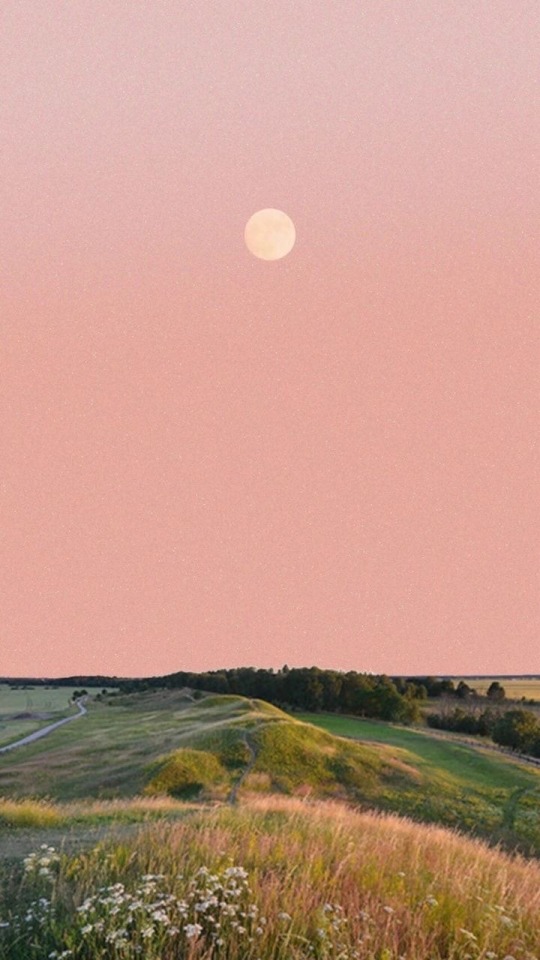
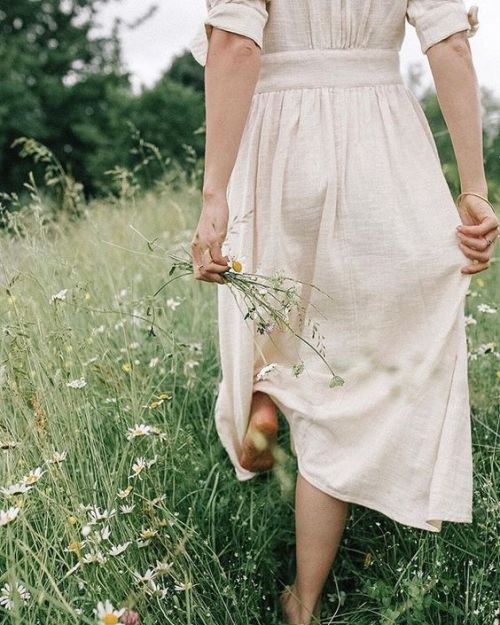
source
Basics of Kitchen and Cottage Witchcraft

Kitchen witches believe that the kitchen is a sacred place where all of the magick happens. They focus on the use of edible ingredients and kitchen tools. A cottage witch is a witch that brings magick into the house and are protectors of the hearth and home. They bring cheer and warmth to every room they enter. Their focuses are on the family, home, and daily needs. Both the cottage and Kitchen witch believe that by honoring the home it honors the Gods and Goddesses. They bring magick into everyday life and daily chores.
Ways a Kitchen and Cottage witch can bring magick into a home:
Create a kitchen altar
Stock your shelves with herbs and spices
Bring maximum feng-shui to your home
Keep the home physically and spiritually clean
Paint the house walls in colours that bring happiness, warmth, and coziness
When making a sandwich put mustard or mayo sigils on it
When making meals add herbs that correspond to your magickal needs
Decorate the home according to the sabbats
Brew some special teas
Make your own candles, salves, and tinctures.
Make offerings to Gods and Goddesses of hearth and home.
Ask your deities to keep your house safe and healthy.
Create your own recipes and add your own touch of magick to them
Put intent into everything you cook and clean
Make an incantation or short song to sing while you stir.
Inscribe your wooden spoons with sigils
Carve your wooden shelves with sigils - carve them at the bottom of the cupboard to remain discreet
Craft oils, incense, soaps, potions, and salves.
Make herbal remedies
Chant while cleaning or preparing a meal
Use numerology in their practices by the number of times they stir or the number of times they knead dough.
During the mead moon, brew mead with magickal intent.
Decorate the home with your own art or art done by your children, poems, knits, woodcraft’s, paintings, quilts, diy’s, or tapestries.
Enchant your crafts.
Use weather magick, candle magick, ribbon charms, and anything else used to add magick to your home.
Honour the ancestors.
Bless the home.
Start a garden and will it with organic and in season fruits and vegetables.
Charge herbal oils by moonlight or candlelight to heal, bless the home or to clean and protect the woodwork she polishes with it.
Scatter charm bags, witches ladders, chimes, and bells around the home.
Grow an indoor jungle
Learn herbal remedies to treat MINOR injuries
If you work with meat make sure to thank and honour the animal it came from.
Sing or play music to raise good vibrations
Bake and cut cookies in shapes to match your intentions
Provide someone in need with a free meal
Volunteer at a local soup kitchen to bring magick into it
What their altar may display:
Candles
Tools used for sacred use
Four elements
Statues of the honoured deities
A doll weaved of corn
A kitchen witch’s altar is often displayed in the corner of the kitchen and is not permanent
Food made by the witch left as an offering
Some beliefs followed:
Magick is not used to inflict pain on others or block anyone’s free will
Believe in living simple lives
Believe in using organic items, products that aren’t animal tested, recycling, and composting.
Creativity is a form of devotion
Keep peace in the household
May the home always contain good food, good talk, and good company
Welcome guests into the home with open arms
Cottage and Kitchen witch superstitions/wives tales:
Stir clockwise to bring good luck
Never stir with a knife as it is considered bad luck
Place a piece of amethyst near the stove top to make the food cooked there tastes better
If an apple bursts in the oven while baking it means good luck is on its way for the cook
Eggs that are cracked while they boil is a sign that visitors are on their way
Dropping silverware means that company is coming
Spilling water on the table cloth means that rain is on its way
Seeing a spider in the house is good luck, killing it is bad luck
Wild animal tracks in the snow encircling your house is a sign of good luck and protection
When your cupboard doors are left opens it means that people are gossiping about you
If a broom drops across the doorway it means that you will soon head off on a journey
If you spill salt throw it over your left shoulder to undo any bad luck
To keep evil spirits away chop an onion in half and place it on the window sill
Chosen tools:
Wooden spoons
Knife
Bowls
Cooking pot or cauldron
A ritual knife used to only cut spiritual ties
A Fire place
Broom
Mortar and pestle
Kettle
Jars and bottles
Sewing kit
Cook books
Spells are cast to bring:
Healing
Prosperity
Protection
Abundance
Happiness
Fertility
Harmony
Peace
Deities worked with:
Hestia
Frigga
Brighid
Demeter
May your house stay warm and full of magick!
==Moonlight Academy==



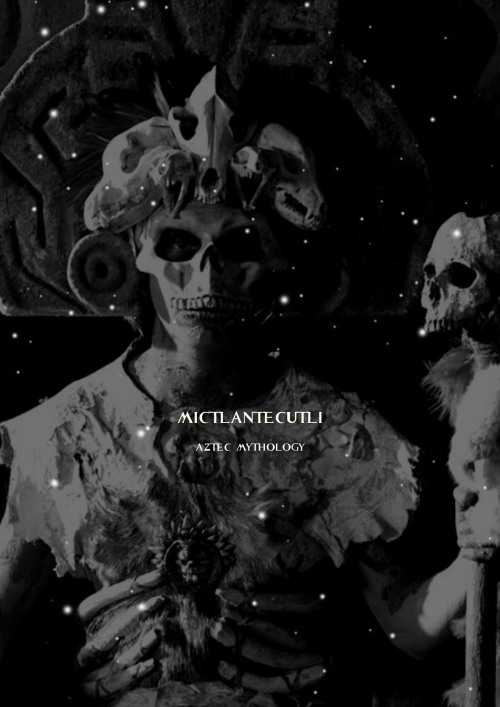






mythologies → death deities
I need more witchy blogs to follow!!
Please reblog if you post about
•hellenic witchcraft
•pro curses/hexes
•candle magick
•herb magick/correspondences
•equality in the witch community
•spell jars

field trip; antelope valley, california
available for purchase here
Mesquite: The Tree of Life of the South West
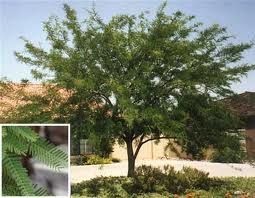
"I could ask for no better monument over my grave than a good mesquite tree, its roots down deep like those of peace who belong to the soil, its hardy branches, leaves, and fruit holding memories of the soil..." J. Frank Dobie, Texas Writer
Overview
The name mesquite derives from the Hispansized word 'mizquitl'.
There are more than 40 species of mesquite trees found worldwide, at least 90 percent of which grow in Latin America, principally Argentina and Chile. Although mesquite also thrives in other arid regions such as those in Southwest North America, Africa, the Middle East, Tunisia, Algeria, India, Pakistan, Afghanistan, Burma, Hawaii, West Indies, Russia, Puerto Rico, and Australia.
The tree itself comes in a variety of sizes depending on rain fall. Locations with higher rain fall note mesquite trees ranging from 40-50ft in height with a spread of nearly 40 feet or more. The branches are sparsely covered in thin feathery leaves with 2inch thorns growing at the base of the leaf joints.
This blog will mostly focus on Latin America; specifically in the Southwest Us and Texas.
There are seven varieties that cover one-third of the state of Texas or 56 million of the 167.5 million acres of land from the Rio Grande to the Panhandle, across central and north Texas and into much of west texas. Of all the US states 76 percent of mesquite wood grows in Texas. Mesquite grows in all regions of the state except the deep East Piney Woods.
Out of the seven varieties, the post will mostly reference Prosopis glandulosa var. glandulosa a.k.a "Honey Mesquite".

Map of the American South West and Latin america showing the range of Mesquite tree growth.
Native Tribes: Resource and Myth

Description reads: Salt River Reservation, Pima Agency Arizona, two Maricopa men(sitting) and Mojave Man in full aboriginal dress. 1880
Mesquite was such an omnipresent and nutritious resource and a central part of life itself that many tribes such as the Walapai, Apache, Papago, and Maricopa honored mesquite within their language and mythology.
Mesquite beans were the food staples for many of the South West Native American tribes. Through out the United states they gathered millions of pounds annually. In cases of food shortages, mesquite beans were often the only food source.
Much of the plant material such as fiber, thorns, sap, and roots were used in the making of many goods. The fibers were used for making of textiles and baskets. The
The creation myth of the Maricopa states that the Maricopa, Pima, and Yavapai -after death of their maker- scattered over the land and gathered mesquite beans. An Apache myth recounts how the sun and moon consulted with one another and formed the mesquite tree then hung beans upon its branches. The death of the Coyote myth of the Pima tells of Mesquite surviving the Great Flood and of how the coyote ate so many beans that they swelled in his stomach.
The Mesquite was an extremely important resource and was used frequently as an amenity of trade between the Apache tribe and the Pima tribe. When food plants failed during time of drought the Pima would travel long expeditions to trade goods with the Apache for beans and bean flour. With it, the Pima made dough and cooked it as round cakes. Certain tribes such as Pima and Opata also fermented bean flour water creating a bean beer called Atole and has a mildly intoxicating quality.
The gum, or sap, of the tree was used as adhesive to mend broken pottery as well as dye clay before the heating process. The gum when mixed with mud was used in several tribes spiritual and courtship rituals.
Both leaves and gum of the Mesquite is known by the tribes to carry healing powers and medicinal properties.
The Yaqui community in particular honor mesquite as one of two plants to have supernatural powers beyond most other plants. However of the two, only Mesquite grows in the sacred territory of the Yaqui and is said to have powers to detect and vanquish witchcraft especially if the wood is cut into a shape of a cross. One Yaqui myth tells of a "talking stick" made from mesquite wood which foretold death to all people baptized as christian.
Anglo-Texan History
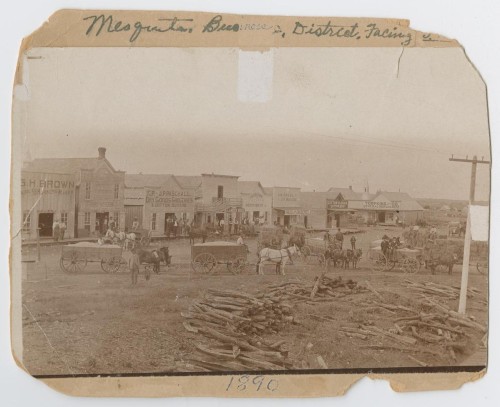
Image of Mesquite Texas, 1890 showing piles of mesquite branches and horse drawn wagons containing grain or beans.
Historians believed that the mesquite was orginally limited to extreme South Texas and spread north only after the Civil War when cattle drives became frequent. Cattle would eat mesquite beans when grass was not plentiful.
Early Texas settlers facored the mesquite wood because not only was it plentiful but it also resisted rotting. Before commercial barbed wire came to texas in the 1870s, ranchers built sturdy corrals from mesquite-log picket fences. Travelers also fashioned hubs for wagons, wagon spokes, and small boat ribs from mesquite.
During the civil war, when coffee was scarce, Texans made ersatz coffee from roasted and ground mesquite beans. Honey made from mesquite flowers was especially prized. In the absence of pins, settlers substituted mesquite thorns.
In the 1869 Dr. John E. Park of Sequin patented under the no. 51,407 on December 5 for the use of mesquite bark in tanning leather. In the article from 1870 Texas Almanac, he included information on the superiority of the use of Mesquite in tanning leather. For, mesquite was found to be richest in Tannic Acid (a substance used for tanning) and worked exceptionally faster than previous methods because the acid penetrated the hide faster. Fast enough to seldom lose hide to decomposition. This allowed for tanning to be done in summer months, a process usually done in winter.
Medicinal Uses
*Note: not a replacement for modern day regulated medications and treatments.*
Aztecs made a lotion from ground mesquite leaves to treat sore eyes.
The Yuma tribe treated venereal diseases with an infusion of leaves and sap.
Comanches chewed on leaves to relieve toothaches.
The Yaqui Tribe treated headaches with a poultice made from mashing leaves to a pulp, mixing with water, and binding the mixture to the forehead.
The light-amber gum or sap that oozed from mesauite bark was mixed with water and gargled to treat sore throats, or swallowed to treat diarrhea, aid in digestion, and help wounds heal.
The Yavapai rubbed a mixture of mud and mesquite gum into their hair to simultaneously dye it and treat lice.
Modern Uses
Although ranchers still try to annihilate mesquite due to injury of livestock and cowhands, a dedicated group of texans cant get enough of it. They are mostly artisans who value mesquite for its beauty, the ease with which it can be worked, and the high sheen of finished pieces. Some even prize its irregularities.
Mesquite has a swirling grain, radial cracks, mineral deposits in the bark, and often many insect holes. Mesquite is dimensionally stable: as most hardwoods dry they shrink more in one direction than they do the other while mesquite shrinks the same percentage in both directions. It has a surface hardness of 2,336 pounds per squared inch, equal to that of hickory and almost twice that of oak and maple; and a density of 45 pounds per foot greater than oak, maple, pecan, and hickory.
Modern Spiritual interpertations:
Harmonizing qualities
Accessing the willingness to cross the wasteland of "dark night of the soul" to find deep spiritual richness within yourself and others
Comfortably connecting with others from a place of compassion and warmth
Standing inside a circle of love
Self blessing
Forgiveness
Possible use for Mesquite in imbalances
Emotional remoteness
Aloofness
Allowing others to see a coolness that actually covers an inner warmth
Feeling as is there is a barren wasteland or spiritual desolation within self.
Feeling separated and remote from others or self.
Personal Suggestion on craft Use*
*Disclaimer: subject to error and not a replacement for actual medications; allergy notice: mesquite is part of the legume family. Research trees and plants in area before ingesting random plants. Watch out for use of pesticides in public places. I do Not recommend diy fermentation. I do not support appropriating native tribes' traditions and rites unless explicitly permitted to by said tribe, do NOT trespass on Sacred Lands for resources it may be possible to purchase sacred mesquite from the tribes. Do Not vandalize sacred grounds or public trees. BE RESPECTFUL.*
Mesquite is tasty. Use wood for rich Smokey flavor on barbequed meats and vegtables.
Make tea from leaves
The beans are said to taste sweet and contain 30 percent sugar trace. Eat beans raw, roasted, dried, or ground into a flour.
Use water diluted sap to treat rashes. (Unless allergic.)
Use diluted sap in hair as you would oils.
Burn leaves and wood to smoke cleanse.
Hang mesquite cross to avert hexes or harmful craft.
I recommend buying from South Western Tribes and other mesquite artisans for bobbles and other wooden figures. Otherwise, source your mesquite in an earth friendly manner by sustainable means and only take what you need.
Information Sources:
"The Magnificent Mesquite" book by Ken E. Rogers
Texasalmanac.com
Desert-alchemy.com
Local Texans
Picture Sources: Google and pinterest


Sheep Lake to Sourdough Gap, July 2021
-
 cryingincrystals liked this · 4 months ago
cryingincrystals liked this · 4 months ago -
 allarounddivinity liked this · 4 months ago
allarounddivinity liked this · 4 months ago -
 wyn17 liked this · 6 months ago
wyn17 liked this · 6 months ago -
 disabledbisexualfroggy liked this · 6 months ago
disabledbisexualfroggy liked this · 6 months ago -
 acosmicventure liked this · 8 months ago
acosmicventure liked this · 8 months ago -
 allnaturalhomemadegoddess reblogged this · 9 months ago
allnaturalhomemadegoddess reblogged this · 9 months ago -
 allnaturalhomemadegoddess liked this · 9 months ago
allnaturalhomemadegoddess liked this · 9 months ago -
 imcatsnyder liked this · 10 months ago
imcatsnyder liked this · 10 months ago -
 sunanditsrays liked this · 11 months ago
sunanditsrays liked this · 11 months ago -
 hearthhusband reblogged this · 11 months ago
hearthhusband reblogged this · 11 months ago -
 purplewitchycat liked this · 1 year ago
purplewitchycat liked this · 1 year ago -
 rolandsbeanies liked this · 1 year ago
rolandsbeanies liked this · 1 year ago -
 inspiration-phantasmagoria reblogged this · 1 year ago
inspiration-phantasmagoria reblogged this · 1 year ago -
 brecandrews-blog liked this · 1 year ago
brecandrews-blog liked this · 1 year ago -
 cosmicwell reblogged this · 1 year ago
cosmicwell reblogged this · 1 year ago -
 introfem liked this · 1 year ago
introfem liked this · 1 year ago -
 z3nko-kitsune liked this · 1 year ago
z3nko-kitsune liked this · 1 year ago -
 nereusbalgaire reblogged this · 1 year ago
nereusbalgaire reblogged this · 1 year ago -
 succoaforbene liked this · 1 year ago
succoaforbene liked this · 1 year ago -
 jerainm liked this · 1 year ago
jerainm liked this · 1 year ago -
 rivermedici liked this · 1 year ago
rivermedici liked this · 1 year ago -
 l0kabrenn liked this · 1 year ago
l0kabrenn liked this · 1 year ago -
 callu-na reblogged this · 2 years ago
callu-na reblogged this · 2 years ago -
 shannonofrp liked this · 2 years ago
shannonofrp liked this · 2 years ago -
 skikyr liked this · 2 years ago
skikyr liked this · 2 years ago -
 princesxxse liked this · 2 years ago
princesxxse liked this · 2 years ago -
 shadowedrebirth reblogged this · 2 years ago
shadowedrebirth reblogged this · 2 years ago

she/hereclectic witchcrafttaurus sun / aquarius moon / aquarius risingmother of two
456 posts